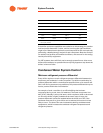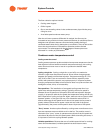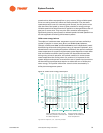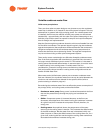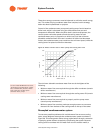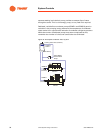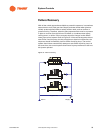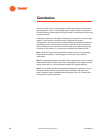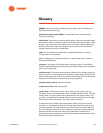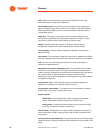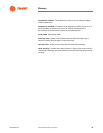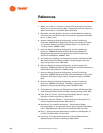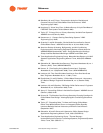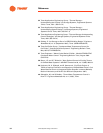
SYS-APM001-EN Chiller System Design and Control
97
Glossary
ASHRAE. American Society of Heating, Refrigerating, and Air-Conditioning
Engineers (www.ashrae.org).
building automation system (BAS). A centralized control and monitoring
system for a building.
chilled water. Also known as leaving-chilled-water or leaving-evaporator-water;
chilled water is the cold water produced by the chiller (flowing through the tube
bundle in the evaporator) and pumped to the air handler coils throughout the
building. Within the evaporator, refrigerant surrounds the tube bundle and
accepts heat from the return chilled water.
chiller. An air-conditioning system that circulates chilled water to various
cooling coils in an installation.
coil. An evaporator or condenser made up of tubing either with or without
extended surfaces (fins).
condenser. The region of the chiller where refrigerant vapor is converted to
liquid so that the temperature and pressure can be decreased as the refrigerant
goes into the evaporator.
condenser relief. The heat sink temperature difference from design outdoor air
temperature for air-cooled equipment and design cooling water temperature for
water-cooled equipment. This term is used to quantify the effect of condensing
temperature on the power consumed by cooling equipment.
condenser water, leaving. See cooling water.
cooling tower water. See cooling water.
cooling water. Also known as tower water, leaving-cooling water, leaving-
condenser water, entering-absorber water, condenser-absorber water, entering-
cooling water, or cooling tower water; obtained from the source (tower, river,
pond, etc.) to which heat is rejected, flows through the tubes that run through
the absorber and the condenser, and is returned to the source.
In electrically driven chillers, the cooling water picks up heat only from the
condenser. In an absorption chiller, the cooling water also has to pick up heat
from the absorber. The water typically flows from the source at 85°F [29.4C],
first to the absorber and then to the condenser (series flow). Associated water
temperatures are referred to as entering-absorber-water temperature (or
leaving-tower-water temperature) and leaving-condenser-water temperature (or
entering-tower-water temperature).



